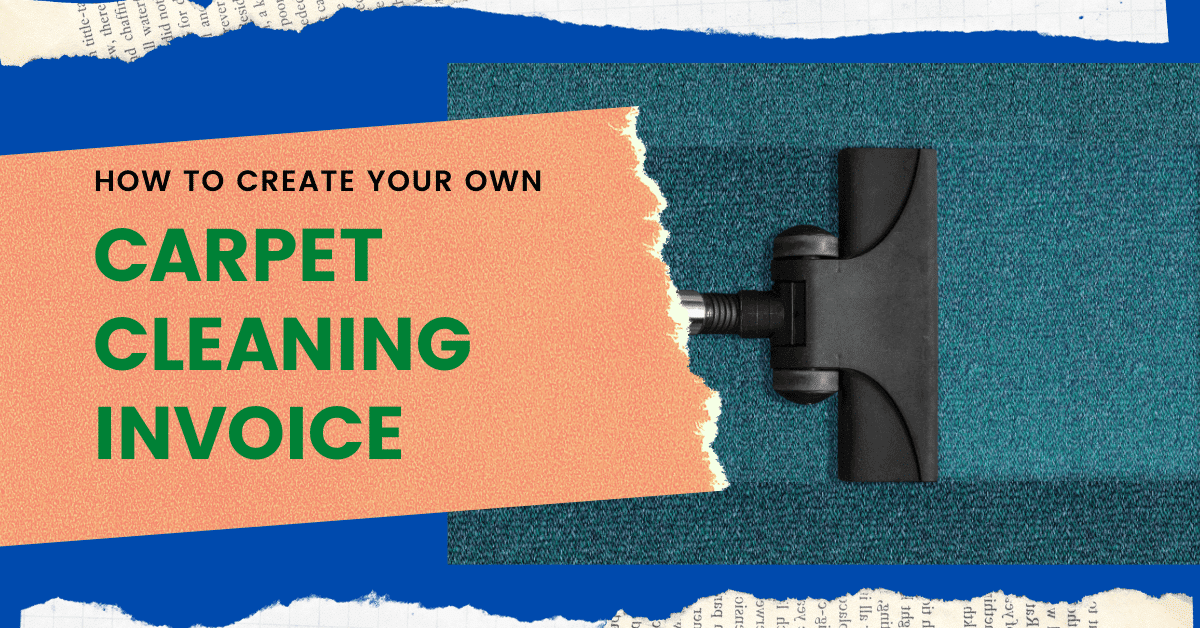If you’re in the carpet cleaning business, you need to make sure you send out the right type of invoice for your clients. Since you take good care of their rugs and carpets, it’s just right that they pay you promptly in return. That’s why you need to start sending out a carpet cleaning invoice. This invoice will ensure that you will get paid on time.
Table of Contents
ToggleWhat is a Carpet Cleaning Invoice?
A carpet cleaning invoice is an invoice document that provides a complete record of the carpet cleaning services that were provided to a customer. It also comes with the individual prices of each service. Carpet cleaning businesses can charge for their services in multiple ways depending on the carpet material, the size of the job, and the cleaning method chosen by the customer.
Creating an effective and transparent billing system will serve the following purposes:
- Increase the chance of repeat customers.
- Increase in the trust factor of your business.
- Invoicing is 10x easier than manual invoicing.
- Significantly easier end-of-year accounting.
Once you get a carpet cleaning work order, you can proceed to give an estimate, along with permission to perform a carpet cleaning job. Once you’ve accomplished the job, you can send your carpet cleaning invoice and wait for the client to pay you. If you manage to send a formal invoice, you’ll get paid quickly.
Types of Carpet Cleaning
For you to send the appropriate invoice for your carpet cleaning business, you need to know the different types of carpet cleaning services that you offer. Most carpet cleaning companies utilize various methods and tools depending on a series of different factors. For reference on general carpet cleaning methods, the following are popular choices that you can employ in your business:
Bonnet Cleaning (Carpet Cleaning with Absorbent Pad)
This method offers a surface-style carpet cleaning that features vacuuming the carpet, soaking it in a chemical solution, and scrubbing it simultaneously with a rotating pad. Bonnet cleaning is usually done on an industrial rotary machine for an overall seamless finish.
Pro: Works very well for carpets that are minimally-soiled. It’s fast, easy, and relatively cheap compared to other options.
Con: Doesn’t offer deep cleaning. Even after the process, it can still leave dirt and even cleaning residue, which can be dangerous if you have kids at home.
Encapsulation (Dry Carpet Cleaning with Absorbent Compound)
Using an industrial motorized brush, powdered carpet cleaning agents seep into the deepest parts of a carpet. It will then sit for a couple of hours before the carpet cleaner vacuums the agent out, cleaning the carpet in the process.
Pro: Easy to use and faster finish.
Con: After several cleaning cycles, even a small amount of powder can accumulate considerably, which can lead to severe dust build-up.
Foam Dry Carpet Cleaning
This dry carpet cleaning method makes use of a strong chemical agent that turns into a foamy substance as it enters the threads of the carpet. It uses a rotating tool brush to scrub the carpet from inside out. After the scrubbing process, the chemical foam is then extracted using a high-power vacuum.
Pro: Simple, fast, and inexpensive option. Uses high-friction while leaving a low amount of moisture after the cleaning process.
Con: It can potentially lower cleaning temperature while not providing thorough extraction below the carpet’s surface.
Hot Water Extraction
Also known as “steam carpet cleaning,” this carpet cleaning method is the most commonly used by cleaning companies. It involves dissolving dirt on carpets using hot, high-pressure water.
Pro: Deep-cleans the carpet by using high water temperature and pressure. Allows the cleaning agents to sit on the carpet for maximum effect.
Con: Longer drying time and expensive equipment.
Pricing Rate of Carpet Cleaning
Generally, carpet cleaning services offer two pricing options: hourly rate or estimate depending on the square footage of the area to be cleaned. Regardless of the pricing that you choose, you will need to take into account the size of the carpet, the type of cleaning method used, and the type of carpet material needed to be cleaned.
Since there are different factors to consider, you will need to calculate several rates to ensure that each service is included in the invoice. In addition, you can also determine whether or not a particular area of your service is profitable.
With that said, let’s take a look at each of the two pricing methods:
Hourly Rate
To determine the hourly rate of your carpet cleaning business, you will need to account for all the expenses that you accumulate in each type of service. In addition, you should also include the following:
- Type of cleaning materials used
- The time it took to drive to the client’s location and executing the service
- Fuel spent driving to the client’s location
- Salaries paid to the carpet cleaners who did the job.
Square Footage
Charging per square foot will provide you with an incentive to complete the job at a faster pace. For this type of pricing, the faster the job is complete, the more revenue is earned. When charging for square footage, it’s important to include all factors of the cleaning job into the price-per-square-foot. That way, you can avoid charging for material fees and transportation to your customer.
Future-Proof Your Invoices with Automated Recurring Billing
Now that you know how to create a carpet cleaning invoice, it’s time to take it up a notch by ensuring your invoicing process stays relevant in both the present and future. With automation and recurring billing, you can make that happen!
Why Recurring Billing?
Recurring billing using subscription software is easier to manage and eliminates the need for customers to do manual monthly billing. Recurring payments are also beneficial from a business standpoint because they provide consistent cash flow, fewer administrative costs associated with late or incomplete invoices, and less time spent on invoice reconciliation.
In addition, recurring subscriptions also reduce customer acquisition costs because there is less need for marketing. This billions strategy is very flexible since businesses can make changes on their end without any service disruption. Recurring billing also increases customer loyalty by providing more opportunities for discounts or rewards.Recurring payments are not universal. However, some businesses still require total payment upfront for each order placed. If you’re interested in learning more about recurring billing, click this link.
Make Sure You Choose the Right Provider!
Recurring billing can be a valuable tool for your business, but only if you choose the right software. A recurring invoicing system like ReliaBills allows you to take advantage of automated and secure payment processing without increasing costs or administrative burdens on your staff members. Our invoicing and recurring billing services free up employees’ time, so they can focus their efforts elsewhere instead of worrying about billing and collections.
Get Paid On Time!
The ReliaBills recurring software also ensures that you get paid on time each month, which will help your business avoid costly late fees or other penalties. Our recurring invoicing system can even reduce the risk of cyber attacks by offering more security than traditional payment methods like checks or credit cards. We’ll make sure that hackers are kept at bay by providing a safe and secure payment processing system that will prevent customer data interception.
Every Step is Automated
In addition, our recurring invoicing system also allows you to request immediate payment whenever necessary. ReliaBills offers a wide range of flexible options for setting up automated payments without losing control over your cash flow or contracts. With our recurring billing software, there is no need to send out bills every month manually. Instead, you can set up automatic invoicing and billing to send out bills on your schedule.
Easier Payment Collection and Processing
ReliaBills helps ensure that customers will pay their bills every month and makes it easier for businesses to collect payments from those who are late or miss a due date entirely. When this happens, the recurring system automatically sends out an overdue invoice and continues to follow up with the customer until payment is received.
Consistent Cash Flow
With recurring billing, you’ll be able to optimize your cash flow while providing ease of use for customers by allowing them to pay their bills on time without any hassle or unnecessary fees – and that’s something everyone can appreciate! Using automated invoicing software, you can also receive immediate payment when necessary and control the frequency of billing cycles so that your business isn’t stuck waiting for customers to pay their bills. With ReliaBills recurring billing, you can achieve all this for only $24.95 per month. Create your free account and subscribe to ReliaBills PLUS now! Click here for more info.
How to Create a New Recurring Invoice Using ReliaBills
Creating a New Recurring Invoice using ReliaBills involves the following steps:
Step 1: Login to ReliaBills
- Access your ReliaBills Account using your login credentials. If you don’t have an account, sign up here.
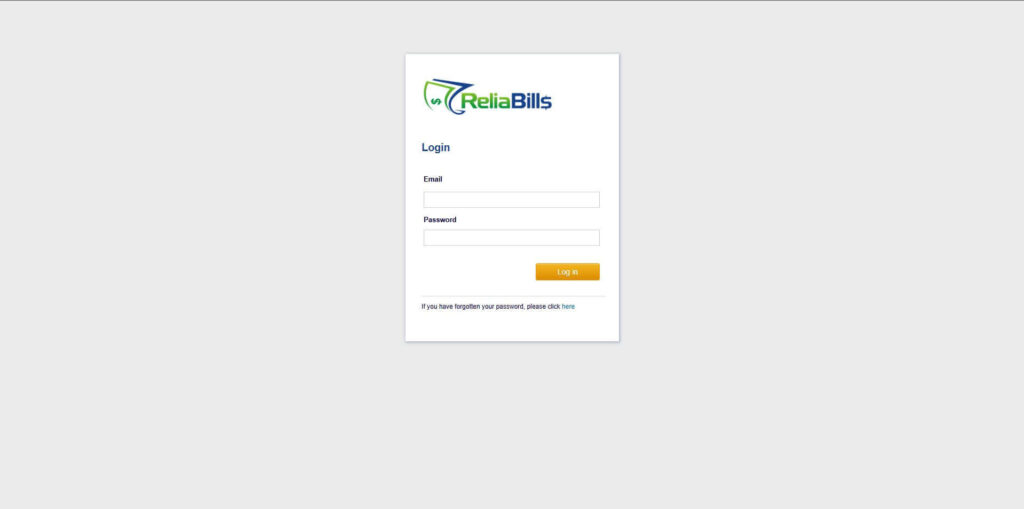
Step 2: Click on Recurring Invoices
- Navigate to the Invoices Dropdown and click on Recurring Invoices for an overview of the list of your existing customers.
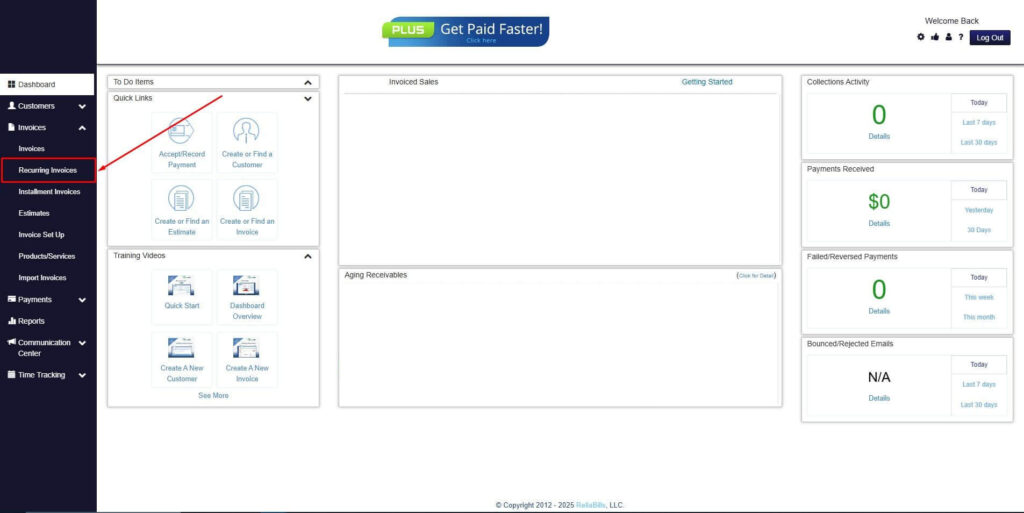
Step 3: Go to the Customers Tab
- If you have already created a customer, search for them in the Customers tab and make sure their status is “Active”.
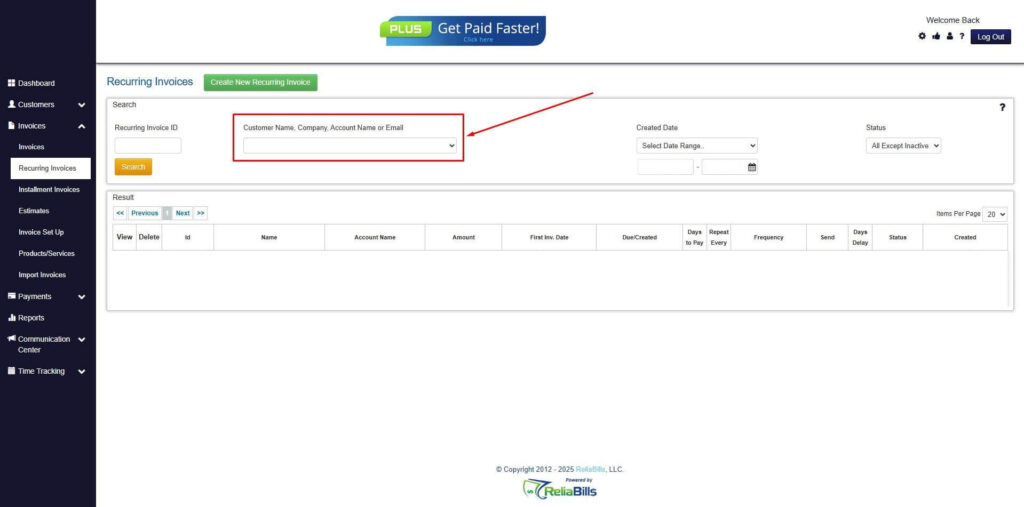
Step 4: Click the Create New Recurring Invoice
- If you haven’t created any customers yet, click the Create New Recurring Invoice to create a new customer.
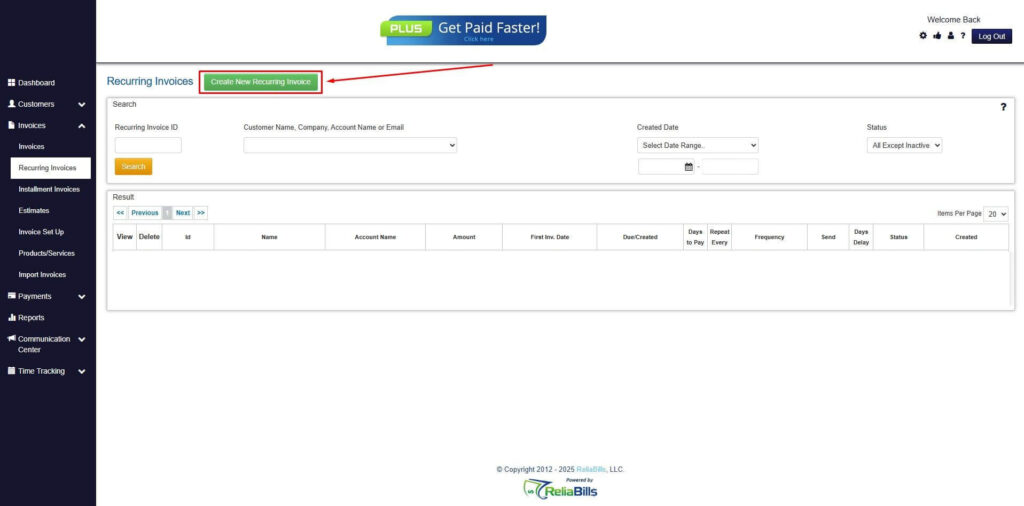
Step 5: Click on the “Click here” Button
- Click on the “Click here” button to proceed with the recurring invoice creation.
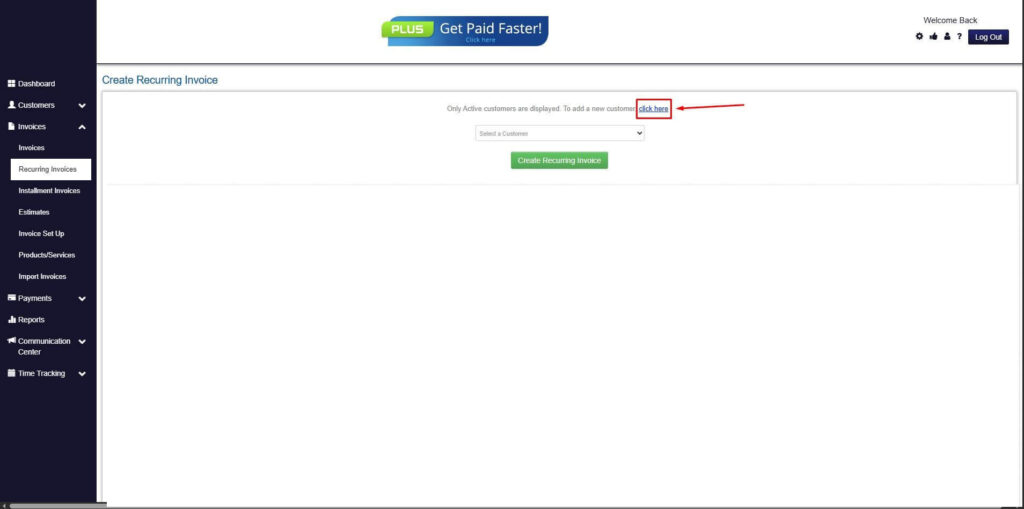
Step 6: Create Customer
- Provide your First Name, Last Name, and Email to proceed.
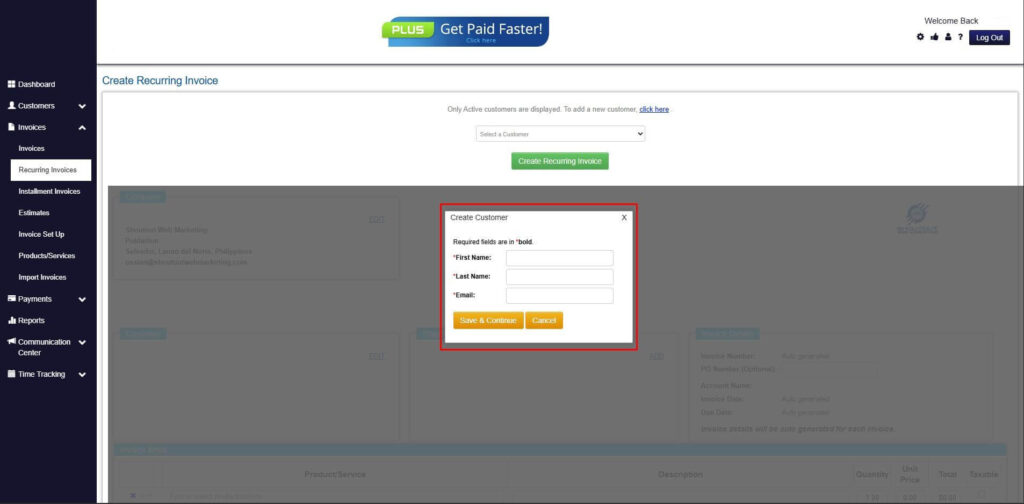
Step 7: Fill in the Create Recurring Invoice Form
- Fill in all the necessary fields.
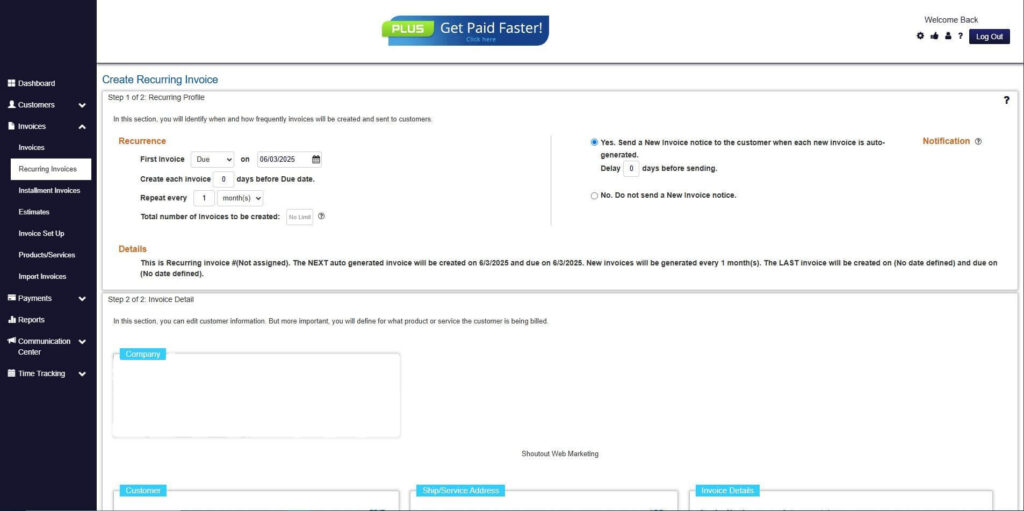
Step 8: Save Recurring Invoice
- After filling up the form, click “Save Recurring Invoice” to continue.
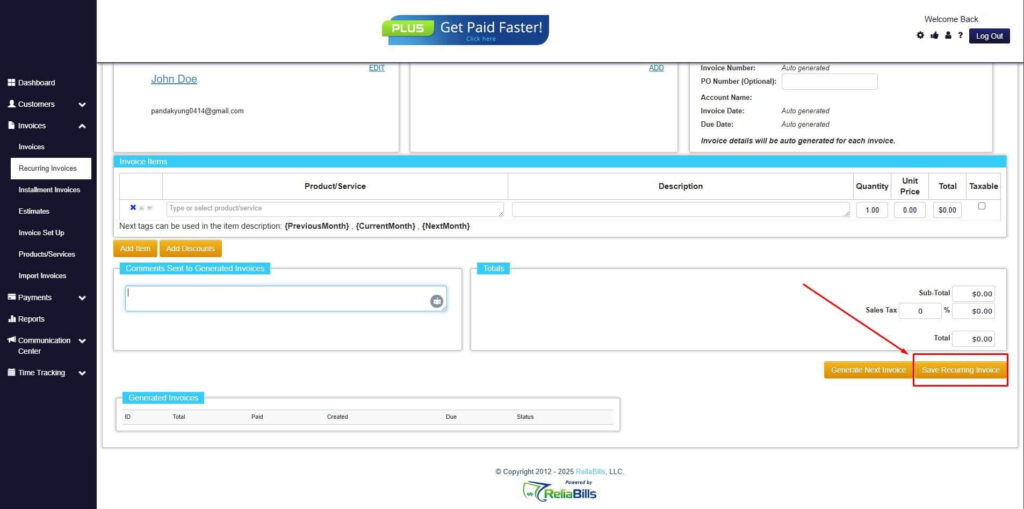
Step 9: Recurring Invoice Created
- Your Recurring Invoice has been created.
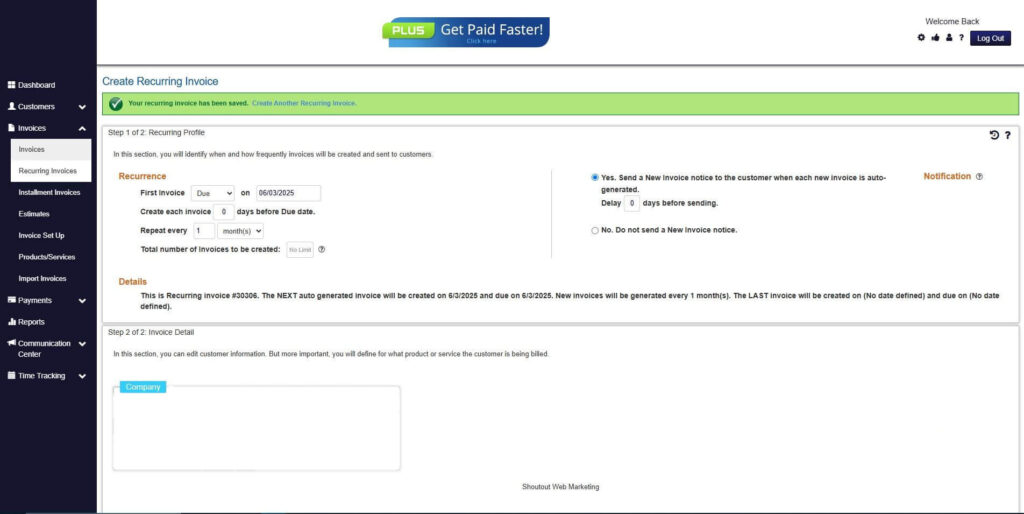
Wrapping Up
That’s everything you need to know about creating a carpet cleaning invoice. Keep in mind that as a carpet cleaning company, you need to make sure that you have an official invoice that suits your business. A carpet cleaning invoice will provide all the necessary information for you to get paid quickly and on time.
ReliaBills offers professional carpet cleaning invoice creation. All you need is to create a free account and you’re ready to create your invoice on their website. Your customers will be delighted to know that you went the extra mile to ensure that they received your invoice on time.

